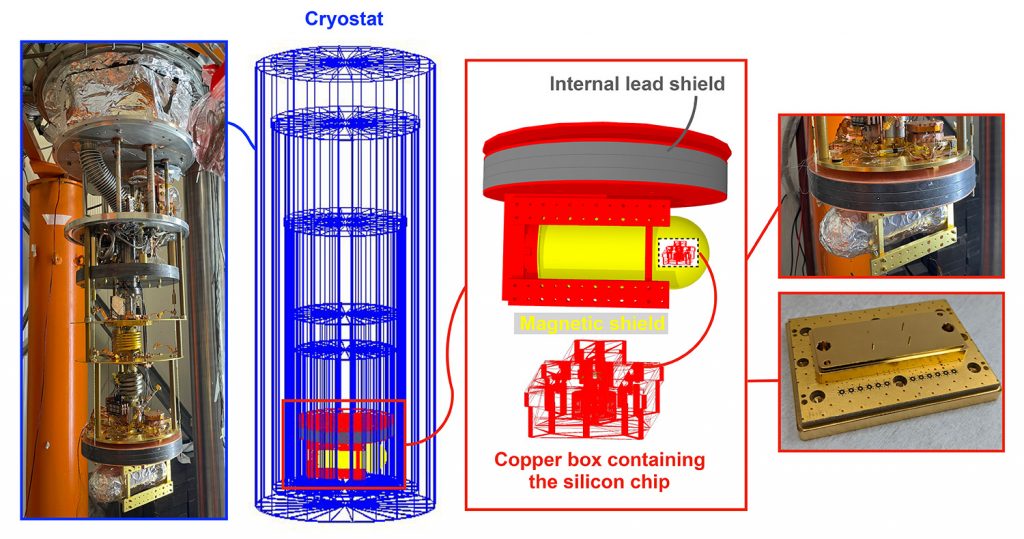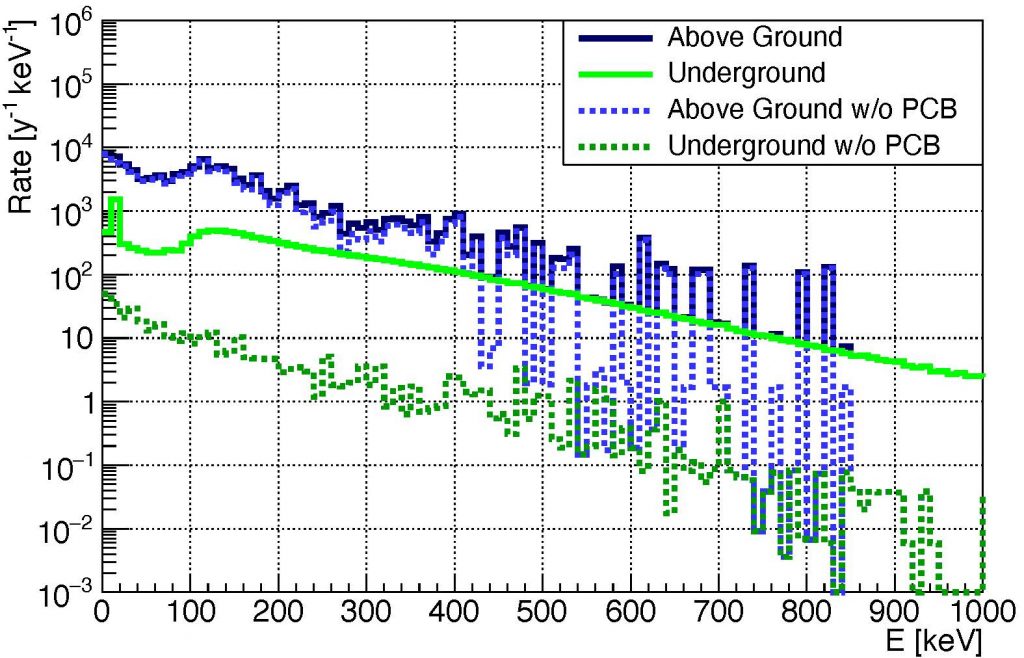Disentangling the Sources of Ionizing Radiation in a Typical Qubit Chip
Identifying the sources of radioactivity enables the development of appropriate strategies for mitigation
The Science:
Radioactivity was recently discovered as a source of decoherence and correlated errors for the real-world implementation of superconducting quantum processors. A variety of techniques for radio-assay was used to characterize the radioactive level of the laboratory environment and of all the components used for qubits operation. We then developed Monte Carlo simulations to compute the rate of interactions within a qubit chip due to each source. We observe that the main source of radioactive interactions are spontaneous decays of the naturally radioactive isotopes in the laboratory environment. An almost comparable rate comes from cosmic muons.
The Impact:
These results show that the main source of radioactivity in qubits, namely the laboratory environment, can be easily suppressed via passive shields around the refrigerators. On the other hand, cosmic rays are a serious concern and can be abated only by moving the facility to underground sites; to mitigate their contribution, a worldwide R&D program aiming to coupling qubits with external muon-vetos has begun.


Summary:
In this work, we measure levels of radioactivity present in a typical laboratory environment and in the most commonly used materials for the assembly and operation of state-of-the-art superconducting qubits. We developed a GEANT- 4-based simulation to predict the rate of impacts and the amount of energy released in a qubit chip from each of the mentioned sources. In standard laboratories, we determine that the dominant source of radioactive impacts is the laboratory environment, followed by cosmic rays.
We prove that operating the qubit chip in a shielded facility can suppress the radioactive level by about 30 times. At this point, the residual rate will be dominated by the Printed Circuit Board used for the electrical connections of the qubit chip.
Contact:
Laura Cardani – laura.cardani@roma1.infn.it
Focus Area:
Materials for 2D and 3D Quantum Devices
Institutions:
INFN, Fermilab, Università di Milano-Bicocca, Gran Sasso Science Institute, National Institute of Standards and Technology, Rigetti Computing
Citation:
Cardani, et al. Disentangling the sources of ionizing radiation in superconducting qubits. Eur. Phys. J. C 83, 94 (2023). https://doi.org/10.1140/epjc/s10052-023-11199-2
Funding Acknowledgement:
The work was supported by the U.S. Department of Energy, Office of Science, National Quantum Information Science Research Centers, Superconducting Quantum Materials and Systems Center (SQMS) under contract no. DE-AC02-07CH11359, and by the Italian Ministry of Research under the PRIN Contract no. 2020h5l338 (“Thin films and radioactivity mitigation to enhance superconducting quantum processors and low-temperature particle detectors”).
